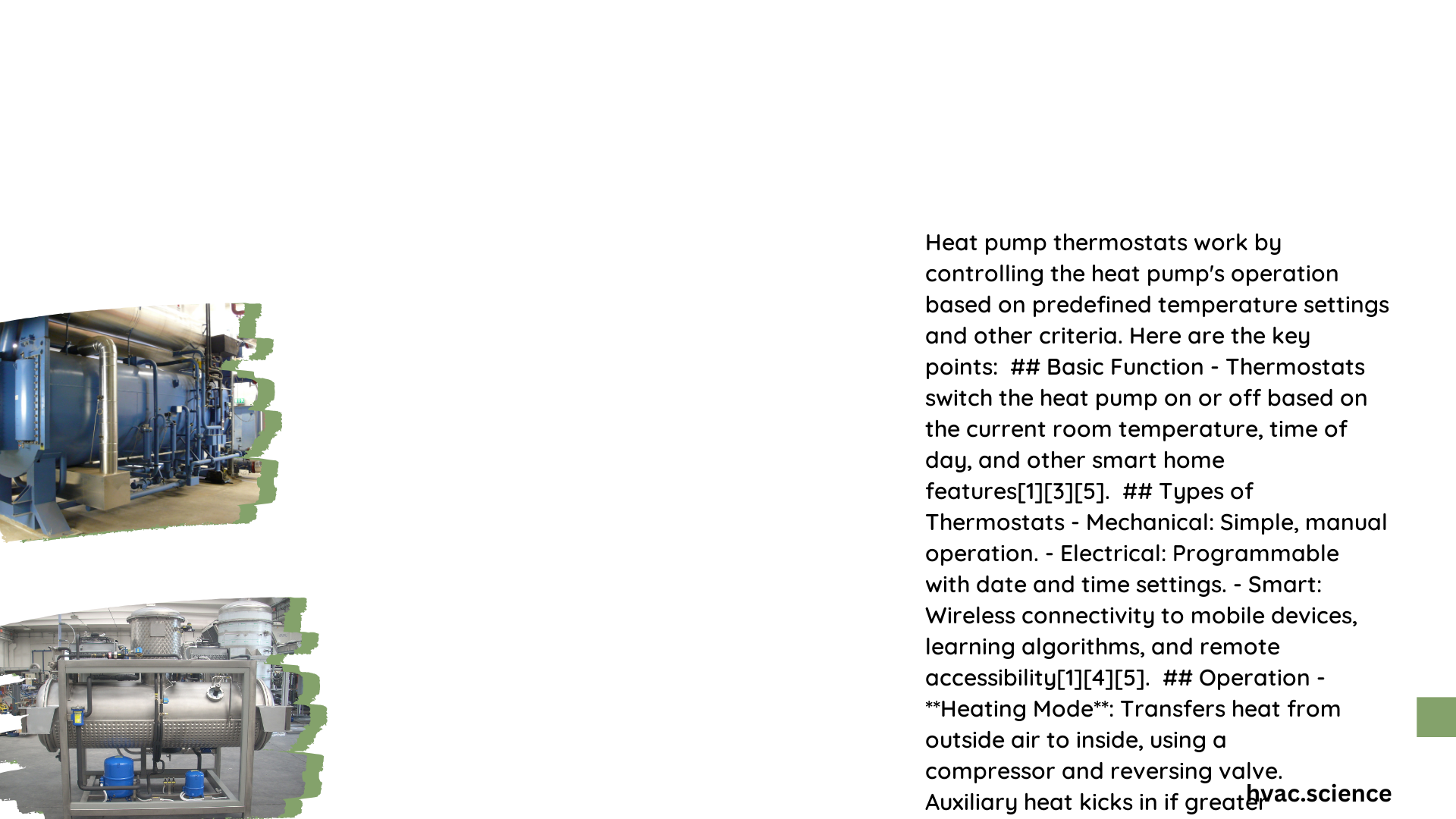Heat pump thermostats are sophisticated control systems that manage temperature regulation by intelligently monitoring indoor conditions, sensing environmental changes, and activating heating or cooling mechanisms through precise electrical signals. These advanced devices utilize complex sensor networks, reversing valve controls, and multi-stage temperature management to ensure optimal comfort while maximizing energy efficiency across various residential and commercial environments.
What Are Heat Pump Thermostats?
Heat pump thermostats are specialized control devices designed to manage the operation of heat pump systems with precision and intelligence. Unlike traditional thermostats, these advanced units understand the unique operational characteristics of heat pumps, enabling more nuanced temperature control.
Key Components of Heat Pump Thermostats
| Component | Function | Significance |
|---|---|---|
| Temperature Sensors | Measure indoor/outdoor temperatures | Enables accurate system activation |
| Reversing Valve Control | Switches between heating/cooling modes | Provides year-round temperature management |
| Multi-Stage Control | Manages different heating/cooling intensities | Optimizes energy consumption |
How Do Temperature Sensors Operate?
Temperature sensors in heat pump thermostats work through several critical mechanisms:
- Resistance-Based Detection
- Utilize thermistors that change electrical resistance with temperature
- Provide precise temperature measurements
-
Convert resistance variations into readable temperature data
-
Digital Sensor Technologies
- Employ advanced digital temperature sensing chips
- Offer higher accuracy compared to traditional analog sensors
- Enable faster response times and more granular temperature control
Mechanism of Refrigerant Flow Control
The thermostat’s ability to control the reversing valve determines the heat pump’s operational mode:
- Heating Mode:
- Directs refrigerant to extract heat from outdoor environment
- Transfers thermal energy indoors
-
Activates when indoor temperature drops below set point
-
Cooling Mode:
- Reverses refrigerant flow
- Removes heat from indoor space
- Activates when indoor temperature exceeds set point
Advanced Thermostat Features
Modern heat pump thermostats incorporate sophisticated technologies:
- Smart Learning Algorithms
- Analyze usage patterns
- Automatically adjust temperature settings
-
Predict occupancy and comfort preferences
-
Remote Connectivity
- Wi-Fi enabled controls
- Smartphone app integration
- Geofencing capabilities
Energy Efficiency Strategies
Heat pump thermostats implement multiple strategies to reduce energy consumption:
- Adaptive temperature recovery
- Intelligent scheduling
- Humidity-based comfort optimization
- Detailed energy consumption reporting
Installation Considerations
Critical factors for successful heat pump thermostat installation:
- Compatibility with existing HVAC infrastructure
- Proper wire connection
- Accurate sensor placement
- Professional calibration
Troubleshooting Common Issues
Potential problems and solutions:
- Inaccurate Temperature Readings
- Check sensor placement
- Verify electrical connections
-
Recalibrate thermostat settings
-
Frequent System Cycling
- Examine temperature differentials
- Inspect system sizing
- Verify insulation quality
Conclusion

Heat pump thermostats represent a sophisticated intersection of sensor technology, electrical engineering, and intelligent control systems. By understanding their intricate operational mechanisms, homeowners can maximize comfort and energy efficiency.
